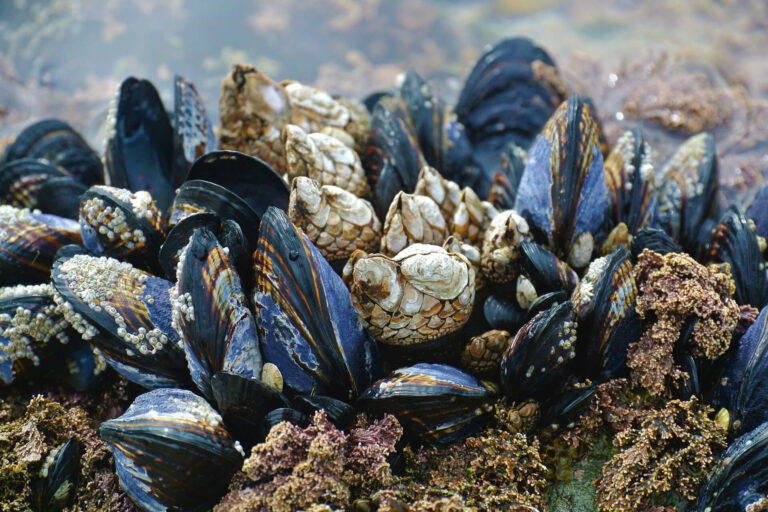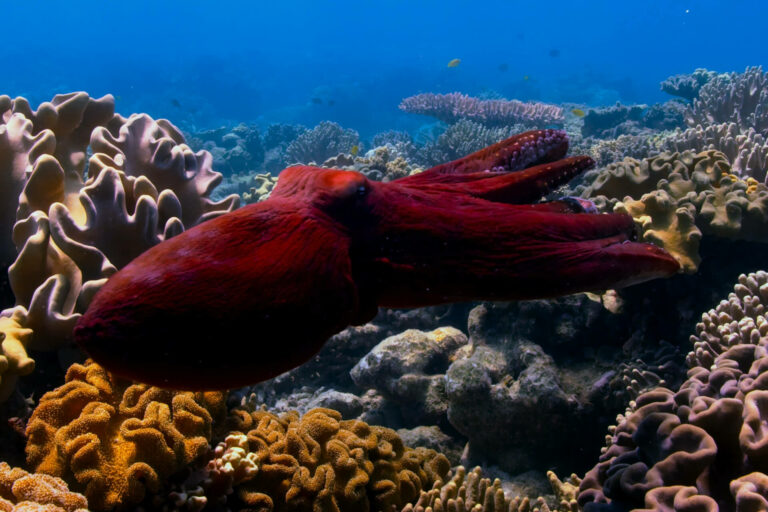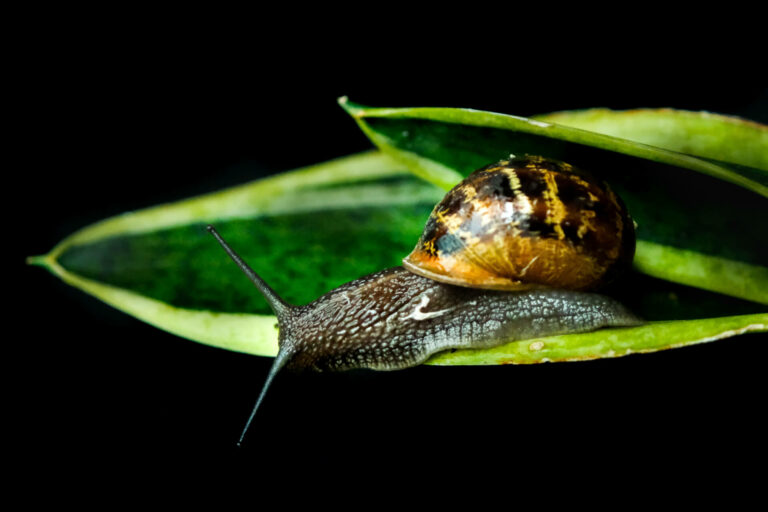HEALTH MONITORING: MOLLUSCS
BIVALVES
Sow M., Durrieu G., Briollais L., Ciret P., Massabuau J. C. (2011): Water quality assessment by means of HFNI valvometry and high-frequency data modeling. Environmental Monitoring and Assessment 182: 155-170.
FULL TEXT
Abstract
The high-frequency measurements of valve activity in bivalves (e.g., valvometry) over a long period of time and in various environmental conditions allow a very accurate study of their behaviors as well as a global analysis of possible perturbations due to the environment. Valvometry uses the bivalve’s ability to close its shell when exposed to a contaminant or other abnormal environmental conditions as an alarm to indicate possible perturbations in the environment. The modeling of such high-frequency serial valvometry data is statistically challenging, and here, a nonparametric approach based on kernel estimation is proposed. This method has the advantage of summarizing complex data into a simple density profile obtained from each animal at every 24-h period to ultimately make inference about time effect and external conditions on this profile. The statistical properties of the estimator are presented. Through an application to a sample of 16 oysters living in the Bay of Arcachon (France), we demonstrate that this method can be used to first estimate the normal biological rhythms of permanently immersed oysters and second to detect perturbations of these rhythms due to changes in their environment. We anticipate that this approach could have an important contribution to the survey of aquatic systems.
Jou L. J., Lin S. C., Chen B. C., Chen W. Y., Liao C. M. (2013): Synthesis and measurement of valve activities by an improved online clam-based behavioral monitoring system. Computers and Electronics in Agriculture 90: 106-118.
FULL TEXT
Abstract
The purpose of this study was to develop an improved clam-based online behavioral monitoring system. The improved system consists of a valvometry apparatus and three kinds of valve closure analytic programs that can offer a real-time and cost-effective valvometric technique to effectively detect valve activities of clams Corbicula fluminea. The improved valvometry apparatus mainly applied electromagnetic mutual-inducting actions and principles to measure the distance between two inductances as the sensing theory of determining the magnitude of the bivalve shell gape. It evolved into a noninvasive and unconstrained valvometric technique, allowing freshwater bivalves to move freely and burrow in the bottom sands of observed tanks with minimal experimental constraint. By employing a compiled LabVIEW graphic control program on a personal computer, the clam-based online behavioral monitoring system can monitor and analyze the daily valve activities of a group of clams in real time. A strict laboratory procedure associated with an improved valvometric technique was performed in the bioassay experiment to observe the magnitudes of shell gape as the determining thresholds of valve closing (VC) and siphon extension (SE) statuses. A statistics-based approach describing bivalve behavioral movements of C. fluminea exposed to unpolluted environment was performed. Our results demonstrated that the magnitudes of shell gape of 20% and 50% can be adopted as the determining thresholds of VC and SE statuses, respectively, to digitalize the valve movements in bivalves, allowing a well-established sequence framework for quantifying the characterization of the daily valve behavioral rhythm.
CEPHALOPODS
Holst M. M., Miller-Morgan T. (2021): The use of a species-specific health and welfare assessment tool for the giant Pacific octopus, Enteroctopus dofleini. Journal of Applied Animal Welfare Science 24: 272-291.
FULL TEXT
Abstract
Cephalopods are increasingly viewed as sentient animals that require the same welfare consideration as their vertebrate counterparts. In this study, an observational welfare assessment tool developed by the EU Directive was revised to be species-specific for the giant Pacific octopus, Enteroctopus dofleini. This E. dofleini health and welfare assessment tool includes categories assessing E. dofleini external appearance, behavior, and clinical signs of stress and disease. These categories are scored in severity from 1 to 4, allowing a quantitative perspective on health observations. Six facilities used the health and welfare assessment tool to evaluate E. dofleini until the animal was humanely euthanized or died naturally. Results showed an irreversible upward trend in scores for feeding behavior and response to stimulus beginning 4 weeks prior to death, with significant changes in health and welfare scores between 4 weeks and the final week prior to death. This suggests that upward trends in these two variables predict death within 3–4 weeks. Highly variable results between individuals for other categories indicate that a quantitative tool can help assess health and welfare at the individual level.
Andrade M. P., Santos C. M. D., De Paiva M. M., Medeiros S. L., O’Brien C. E., Lima F. D., Machado J. F., Leite T. S. (2023): Assessing negative welfare measures for wild invertebrates: The case for octopuses. Animals 13: 3021.
FULL TEXT
Abstract
Welfare metrics have been established for octopuses in the laboratory, but not for octopuses living in the wild. Wild octopuses are constantly exposed to potentially harmful situations, and the ability to assess the welfare status of wild octopuses could provide pertinent information about individuals’ health and species’ resilience to stressors. Here, we used underwater photos and videos to identify injuries and stress-related behaviors in wild Octopus insularis in a variety of contexts, including interacting with fishermen, interacting with other octopuses and fish, proximity to predators, in den, foraging, and in senescence. We adapted established metrics of octopus welfare from the laboratory to these wild octopuses. In addition to observing all of the stress measures, we also identified two previously unknown measures associated with decreased welfare: (1) a half white eye flash and (2) a half-and-half blotch body pattern. More than half of the individuals analyzed had arm loss, and almost half of the individuals had skin injuries. We also observed that irregular chromatophore expression and abnormal motor coordination were associated with interactions with fishermen. This is the first study to apply measures of welfare from the laboratory to wild octopuses. Our results may also aid in the identification of welfare measures for other wild invertebrates.
Bennice C. O., Krausfeldt L. E., Brooks W. R., Lopez J. V. (2024): Unique skin microbiome: insights to understanding bacterial symbionts in octopuses. Frontiers in Marine Science 11: 1448199.
FULL TEXT
Abstract
Microbial communities play a crucial role in the physiology of animal hosts; however, little is known about bacterial symbionts with the group cephalopods, specifically octopuses, and the function of these symbionts. The goal of this study was to determine if octopuses have a unique skin microbiome. The skin microbiome of two sympatric octopuses (Octopus vulgaris and Macrotritopus defilippi) was compared with the surrounding environment, sediment and seawater, to determine if octopus have a unique skin microbiome. High throughput sequencing of the bacterial 16S rRNA gene (V3-V4 region) amplicons was performed using an Illumina MiSeq. Sediment showed the greatest alpha diversity followed by octopus then seawater. Beta diversity revealed a difference in microbial composition between the octopus skin microbiome and sediment and seawater. While phylum Bacteroidetes appeared rare in environmental samples, it was most abundant for the octopus skin microbiome with the majority of the bacteria comprising the family Flavobacteriaceae. Proteobacteria, the largest group of bacteria, also constituted the octopus skin microbiome. Many of these groups occur on both octopus species; however, certain taxa differed in relative abundance between octopus species and may show species-specific host selection. Several bacteria that were identified for the octopus skin microbiome have been isolated from other marine animal hosts, identified as biodegraders and/or produce pigments and squalene, or act as predators of other bacteria. These groups may play a role in defense against environmental stressors or pathogenic bacteria. This is the first study to characterize the skin microbiome in two wild sympatric octopuses. Due to the importance of bacterial symbionts, this can provide insight to the physiology, behavior, ecology, and ultimately the health of these important animals in marine environments as well as care in captive or laboratory settings.
Rodríguez-Barreto D., Sanz-González J. C., Martín M. V., Arrieta J. M., Almansa E. (2024): Sex-specific bacterial microbiome variation in octopus vulgaris skin. Frontiers in Microbiology 14: 1233661.
FULL TEXT
Abstract
Growing knowledge of the host-microbiota of vertebrates has shown the prevalence of sex-specific differences in the microbiome. However, there are virtually no studies assessing sex-associated variation in the microbiome of cephalopods. Here we assess sex-specific variation in the common octopus (Octopus vulgaris) skin microbiome using amplicon sequencing targeting the V4 hypervariable region of prokaryote 16S rRNA genes. Skin and mantle-associated mucus was collected from wild adult individuals of common Octopus (Octopus vulgaris) (9 males and 7 females of similar size). There were no significant differences in the alpha diversity of microbial communities associated with skin or mantle mucosa between sexes. However, our results clearly indicate that adult octopus males and females have a distinct microbial community composition in both skin and mantle associated mucus communities, with female microbiome being dominated by Firmicutes (48.1%), while that of males contained a majority of Proteobacteria (60.5%), with Firmicutes representing only 3.30%, not finding significant differentiation in the microbial communities between the tissues explored. The dominance of different taxa in the skin of O. vulgaris females and males (e.g., Mycoplasmatales and Lactococcus in females and Rhizobiales and Rhodobacteriales in males) suggests a sex-specific symbiosis in which those microbes benefit from easy access to distinct substrates present in female and male skin, respectively. Given the lack of differences in size between specimens of both sexes in this study, we hypothesize differences in hormone profile, as well as behavioral or ecological differences between sexes in the wild, as the main drivers of microbiome differentiation between sexes. Most knowledge of cephalopod microbiota is limited to the digestive tract and the reproductive system. However, cephalopod skin is an organ with a plethora of functions. This is a first attempt to characterize cephalopod skin microbiota and determine sex influence on it.
GASTROPODS
Burnett N. P., Seabra R., de Pirro M., Wethey D. S., Woodin S. A., Helmuth B., Zippay M. L., Sara G., Monaco C., Lima F. P. (2013): An improved noninvasive method for measuring heartbeat of intertidal animals. Limnology and Oceanography: Methods 11: 91-100.
FULL TEXT
Abstract
Since its emergence two decades ago, the use of infrared technology for noninvasively measuring the heartbeat rates of invertebrates has provided valuable insight into the physiology and ecology of intertidal organisms. During that time period, the hardware needed for this method has been adapted to currently available electronic components, making the original published description obsolete. This article reviews the history of heartbeat sensing technology, and describes the design and function of a modern and simplified infrared heartbeat rate sensing system compatible with many intertidal and marine invertebrates. This technique overcomes drawbacks and obstacles encountered with previous methods of heartbeat rate measurement, and due to the sensor’s small size, versatility, and noninvasive nature, it creates new possibilities for studies across a wide range of organismal types.
Boles S. E., Neylan I. P., Rogers-Bennett L., Gross J. A. (2022): Evaluation of gonad reproductive condition using non-invasive ultrasonography in red abalone (Haliotis rufescens). Frontiers in Marine Science 9: 784481.
FULL TEXT
Abstract
The reproductive status in abalone (Haliotis spp.) can be difficult to discern using traditional visual inspection methods and may therefore rely on lethal histological analyses for a definitive determination. With endangered species of abalone, lethal histological examinations are strictly prohibited due to their imperiled status. This research investigated the effectiveness of using non-invasive ultrasound technology as an alternate means of identifying the reproductive status of abalone rather than through invasive biopsies or lethal histological methods. Twelve abalone were randomly selected from cultured red abalone broodstock cohort (n = 200) produced at The Cultured Abalone Farm (Goleta, CA) to initially test these methods. Following initial gonad ultrasound determination, a subset of another cohort of 5 year-old (n = 62) red abalone produced at the UC Davis Bodega Marine Laboratory were monitored using ultrasonography to detect seasonal changes in gonad size for 7 weeks. Following the 7-week assessment period, the full cohort of 5-year old abalone (n = 122) were then spawned and gonads were also evaluated using ultrasound technology before and immediately after spawning. Ultrasound imaging technology accurately differentiated between digestive and reproductive tissues, allowing for the characterization of an ultrasound gonad index score for rapid assessment. Mean gonad thickness determined via ultrasound imaging was categorized on a scale of 1–5, with an index of 1 being the lowest (gonad tissue thin or absent) and an index of 5 being the highest (gonad margin has increased and is compressing the digestive gland) for red abalone. Ultrasound imaging technology was successful in rendering a gonad index score that can be used to track gonad maturation over time in cultured or captive species. Tracking ultrasound gonad scores over time is a useful tool for improving abalone culture production, and increasing animal welfare by reducing handling stress associated with gonad assessments. Individual abalone that are empirically determined ready to be spawned can then be selected for broodstock. Non-invasive ultrasound technology has the potential for broad applications within abalone aquaculture to enhance both food and conservation aquaculture breeding programs.




